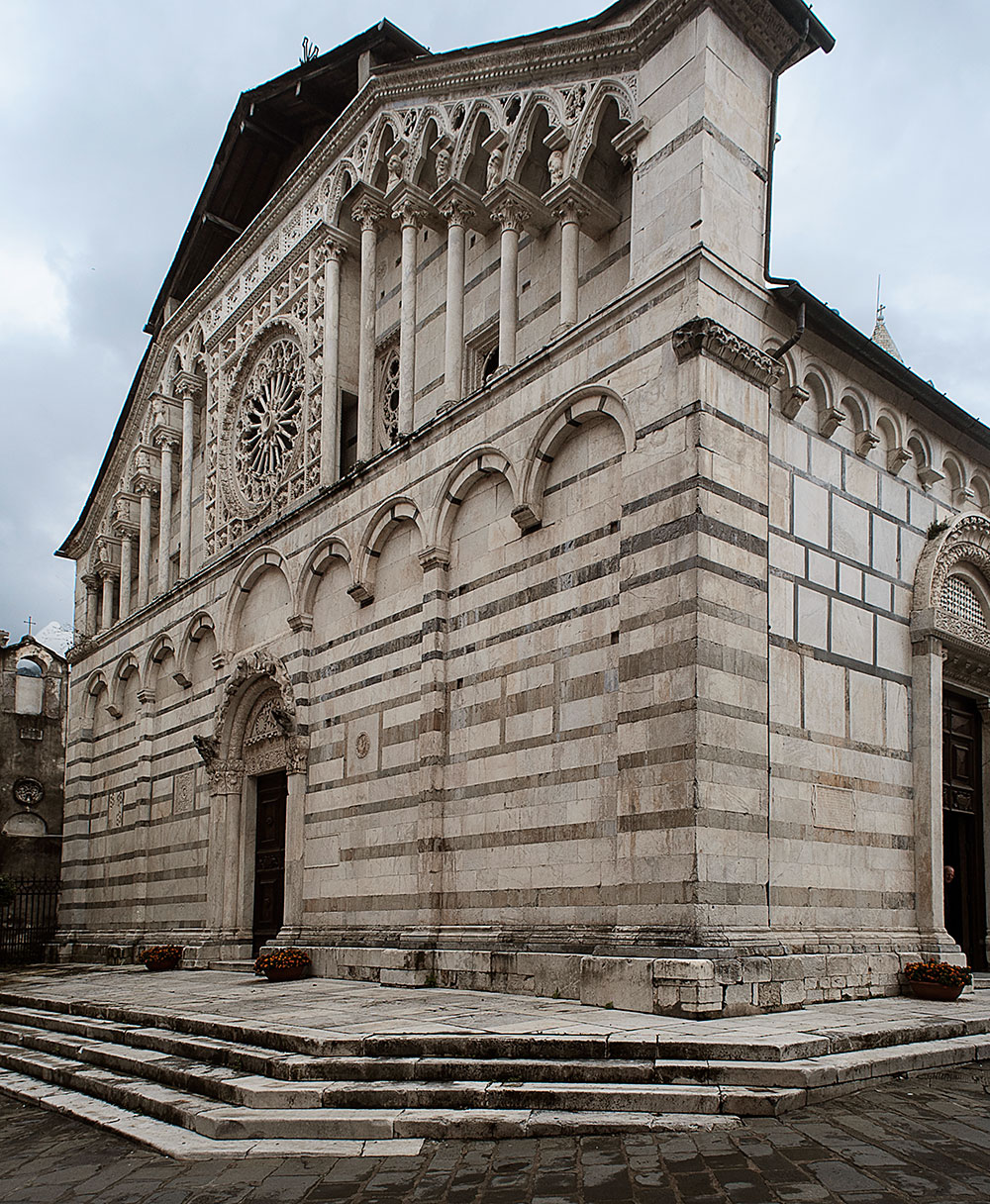
St Andrew the Apostle’s Cathedral of Carrara
Before the year 1000, there was already a church in the first housing cluster of Carrara: the St Andrew Parish church. It is mentioned in the parish archive: “In the year 998 Gottifredo I, Bishop of Luni, lived in Carrara and consecrated the Church of St Andrew to Cathedral”.
The Cathedral of Carrara, dedicated to St Andrew the Apostle in memory of the Parish church, is the first medieval building entirely made in Apuanian marble. Its exceptionality lies in the fact that not only the decorations, but all elements of the structure, including the bell tower, are made of marble blocks.
The temple presents a mixed architecture, indicating the various stages of its building, and this is also typical of a border area like Lunigiana.
To the first Romanesque structure, gothic elements were added successively, in the upper parts, especially on the outside.
The first lombardian-parmense layout (XI century) can still be observed especially on the main entrance with its external capitals and, inside, in the figurative capitals of the first aisles. These sculptures seem to be by the same craftsman that worked inside the Cathedral of Parma, probably a contemporary of the great Wiligelmo.
In the XII century, the Cathedral was entrusted to the canons of St Frediano from Lucca. The second building phase was started by workers from Lucca (resemblances can be observed with the Church of St Frediano of that town).
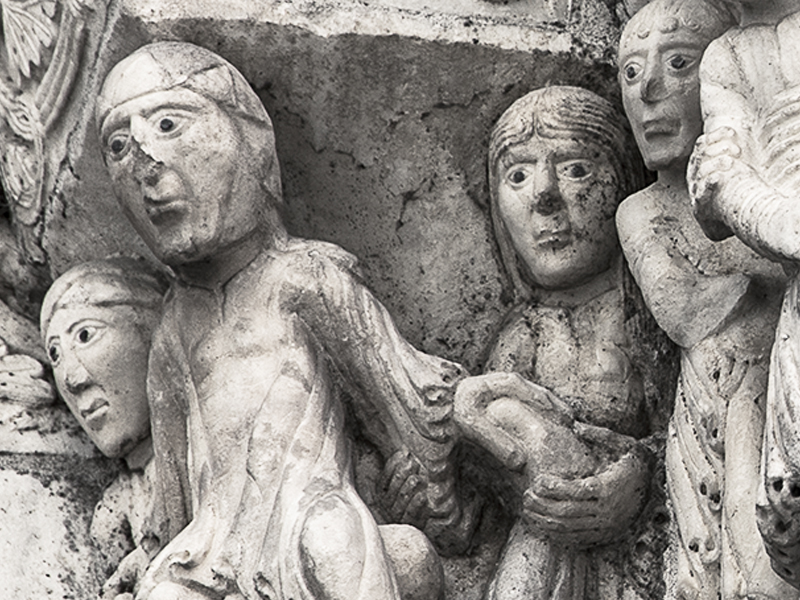
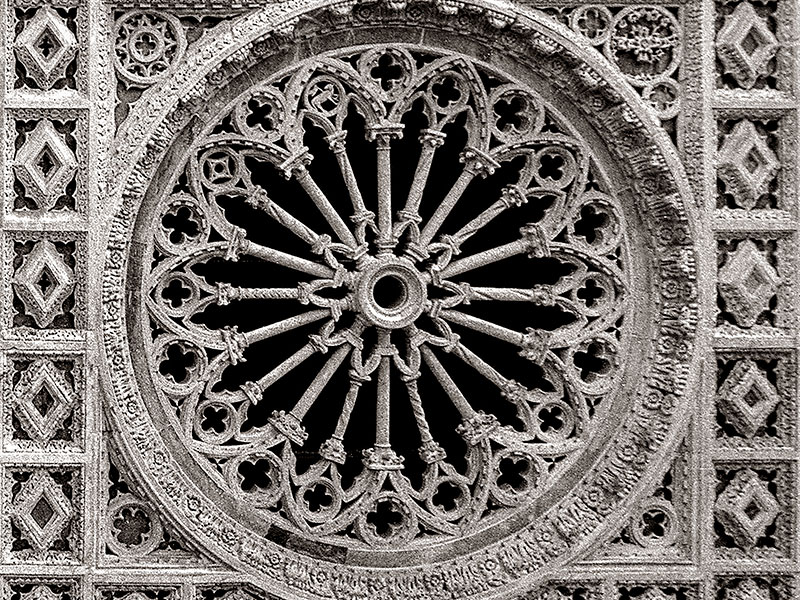
The third and last building phase (XIV century) was carried out by workers from Pisa. This phase concentrated on the upper part of the façade, with the wonderful rose window – similar to the one of St Catherine in Pisa – and on the loggia, with a series of busts on top of the capitals, important examples of Tuscan sculpture. The white and black stripes on the outside of the temple, are typical of the Pisan and Ligurian architectures.
Towards the end of the XV century, the internal walls that had remained coarse, unplastered, started to be painted. Successively, various altars and decorations of all sorts were added.
In 1947/48 it was decided to bring back the Cathedral, as far as possible, to its original style. Six altars were removed and the trussed roof was restored.
In 1992, after a long and delicate restoration, the “cleaning” of the façade was completed. This was followed by the recently completed restoration of the door known as “St John’s”, of Lombardian layout, opening on the side of the church, giving relevance to the fine inlay of the lunetta and the fretwork of the architrave.
On the outside, still on the south side, in addition to St John’s door, a sundial and two finely crafted arch windows can be observed; in the upper structure, there are small arches interposed by finely decorated tiles, among which the “Wheel”, symbol of the city of Carrara, and the “Cross” of Pisa.
The apse is also interesting, with its elegant loggia, and the massive 33-meter-high bell tower.
Inside, there are three aisles divided by columns, and pillars with round arches. Nearly all the columns are in different styles, with capitals likewise varied and exquisite. At the end of the nave there are two sixteenth-century holy water fonts in the shape of wide cups with a basin decorated with festoons and cherubs, a tripod shaped base and a pedestal rich in foliage, angel heads and other decorative elements in bas-relief.
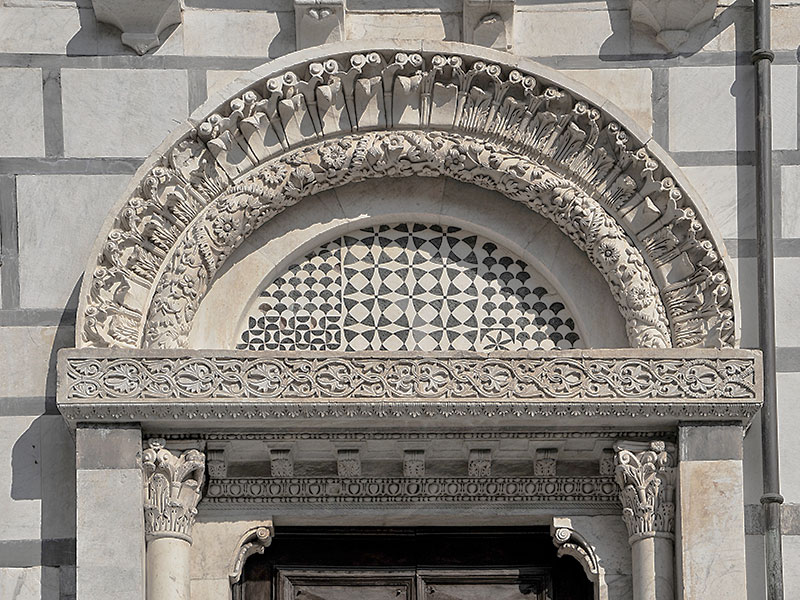
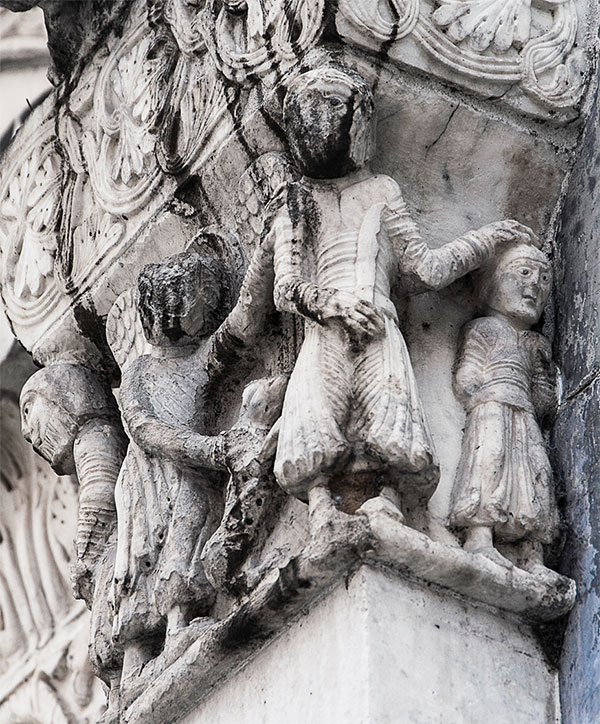
The Façade
The façade of the Duomo, whose earliest historical records date back to the end of the 10th century, is where the modifications of the various centuries are most easily found chronologically. In this temple dedicated to Sant’Andrea, one of the few built entirely in marble, the construction work shows what a strategic position the city of Carrara holds, as a crossroads between north and south, a thoroughfare on the Via Francigena, and a place to stop and visit the quarries of white marble, which has been extracted since the time of the Roman Empire.
The lower part is in Romanesque style with alternating local marble of different colours: in fact, in addition to the well-known white marble, many varieties of marble are extracted from the local marble quarries including entirely black marble. This base recalls the style of the churches of Lucca and can be dated to the 12th century.
The portal is of the same period but by a different hand, quite certainly Niccolò di Wiligelmo and his school, who were active in Parma and Emilia. Rich in symbols with real and imaginary animals, faces and plants recalling the Garden of Eden with its delights and mystery, the capital of the column on the right is particularly interesting because it tells the story of Abraham, the father of Faith (see the photo above).
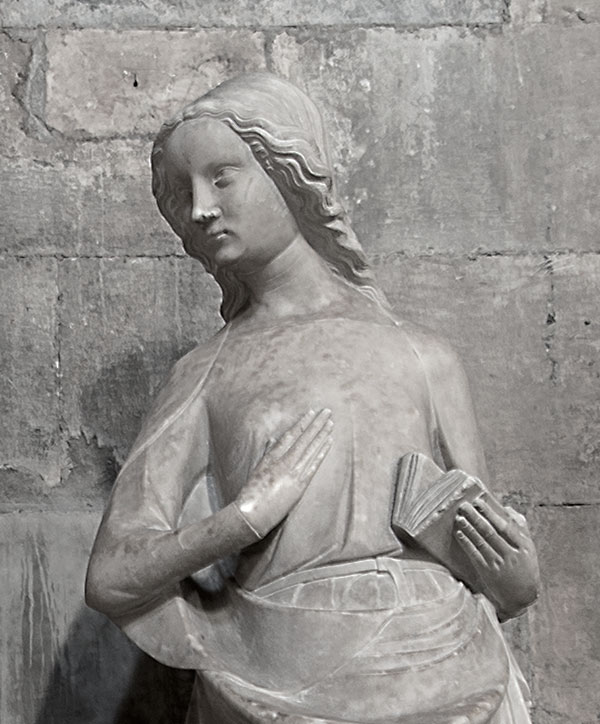
Le Cassanelle
First half of 14th century
The two sculptures depict the proclaiming angel and the Virgin Mary. The angel, with accentuated adolescent features, is wrapped in a large cloak with extremely elaborate drapery, hanging down from the right arm with which he holds the scroll which is torn at the edge. The hair is subtly depicted in individual strands and on the face, with its fine features, there is a barely hinted at smile, with the mouth open over teeth that have been painstakingly carved with delicate naturalism.
The Virgin also has naturally depicted features and hair and a remarkable intricacy of the drapery of the mantle, wrapped around the hips and gathered on the left side. In both figures, there are no signs of the use of a drill and the carving is executed with subtlety, while the surface is extremely highly polished, to give the two statues the appearance of ebony. This impression is accentuated by the sharp detailing of the contours of the drapery, features, hair and hands, which acquire a metal-like quality in certain details, almost as if the unknown artist had votive sculptures made of these materials.
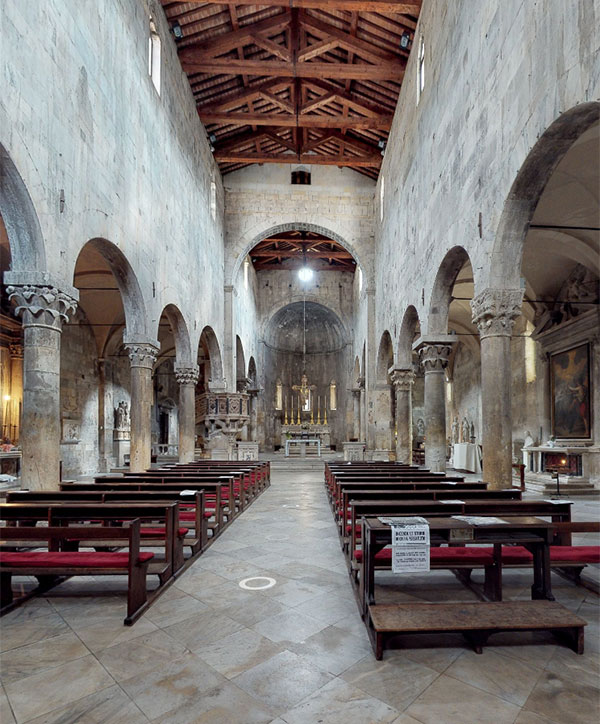
The Marbles
The Cathedral of Carrara represents a true exposition of the use of the various types of marble along the centuries, in the vast range of its possible applications: from simple decorations to sculpture (full-relief and relief), from inlay, to structures and architecture, all the way to furniture for the interior and exterior.
As it is known, it was the ancient Romans of the colony of Luni that started quarrying our mountains. With the decay of the Roman empire, the quarries were closed, to be reopened with the economic renaissance around the year 1000, the same period in which the Cathedral started being built. It is the first Medieval building entirely built in Apuanian marble.
In the temple, the most used marble are:
– Ordinary white, the dominant and most common type, used mostly for the supporting structures: architraves, apse, bell tower, columns and floor.
– Statuario white, the rarest and most known type: the famous white marble of Carrara, appreciated all over the world and across all epochs, since ancient times.
Differently from the Ordinary white, Statuario is completely lacking veins and is easily workable, although it’s very solid. It has a typical translucid pearl white color tending to ivory. “Le Cassanelle”, the sculpted group of the Annunciation at the Altar of the Annunciation and the two angels in the Compagnia Grande are in Statuario white.
The English version
of the St. Andrew the Apostle’s
Cathedral of Carrara website
will be available by July 2024.
See you soon.
